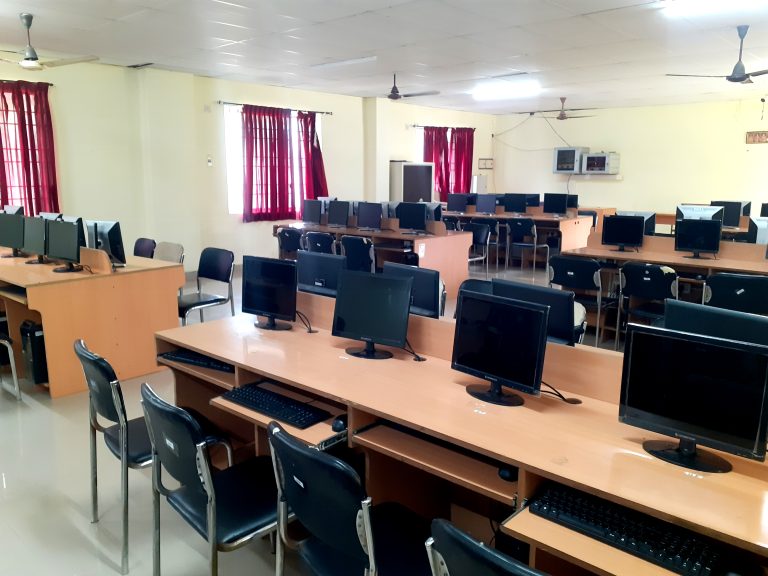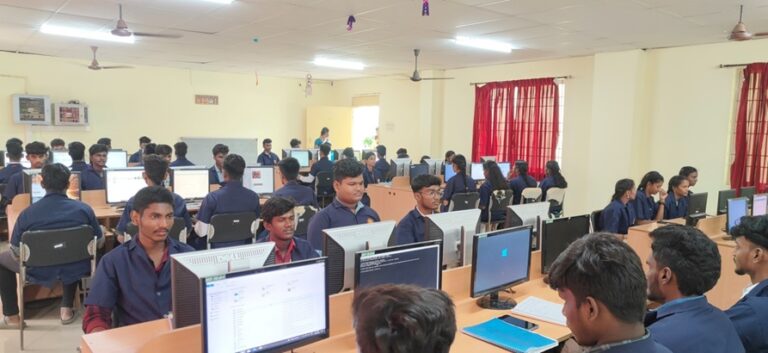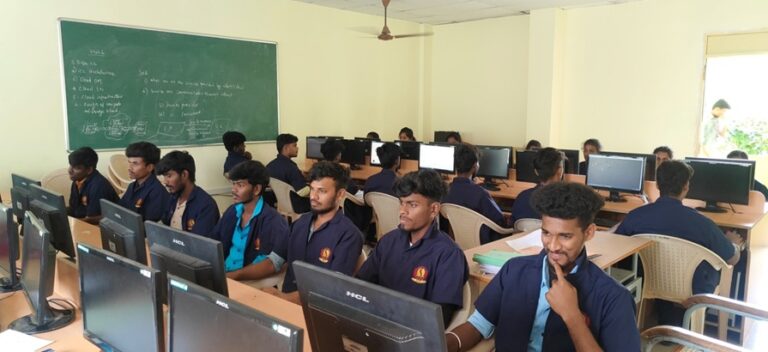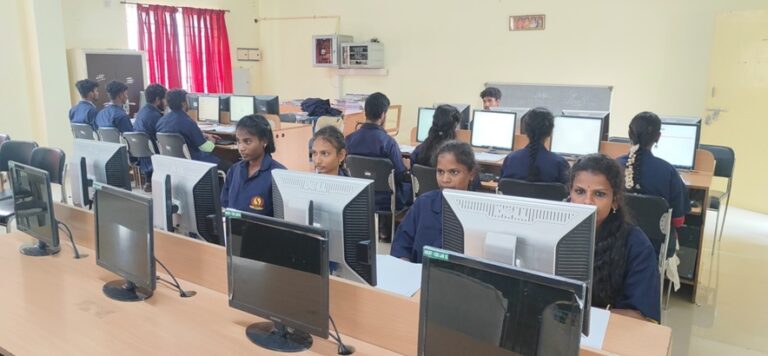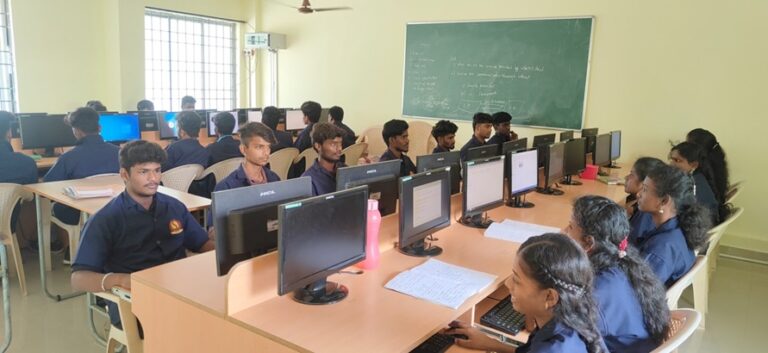CSE - FACILITIES
Laboratories
Laboratories
PROBLEM SOLVING AND PYTHON PROGRAMMING LABORATORY
Problem solving is a process. Most strategies provide steps that help you identify the problem and choose the best solution. There are two basic types of strategies: algorithmic and heuristic. Algorithmic strategies are traditional step-by-step guides to solving problems. Python is commonly used for developing websites and software, task automation, data analysis, and data visualisation. Since it’s relatively easy to learn, Python has been adopted by many non-programmers, such as accountants and scientists, for a variety of everyday tasks, like organising finances.

Digital Principles And Computer Organization
In a digital system, the system can understand only the optional number system. In these systems, digits symbols are used to represent different values, depending on the index from which it settled in the number system. In simple terms, for representing the information, we use the number system in the digital system. A Digital Organization is a type of organization that strategically employs digital technologies to update its business model, products, and services, ensuring it remain competitive in its operational approach and delivery of value to customers. The ongoing utilization of digital technologies has become an integral part of its strategies for sustainable success.

PROGRAMMING IN C LABORATORY
C is an imperative procedural language, supporting structured programming, lexical variable scope, and recursion, with a static type system. It was designed to be compiled to provide low-level access to memory and language constructs that map efficiently to machine instructions, all with minimal runtime support. C programming language holds immense importance in the software development industry. Its simplicity, efficiency, and versatility make it a powerful tool for developing a wide range of applications. From operating systems to embedded systems, C finds its use in numerous domains.

DATA STRUCTURES LABORATORY
It is to provide practical learning on various data structures and to understand the processing of different algorithm for problem-solving. This lab complements the data structures and computer algorithms courses. The course is designed to develop skills to design and analyze simple linear and non linear data structures. It strengthen the ability to the students to identify and apply the suitable data structure for the given real world problem.

OBJECT ORIENTED PROGRAMMING LABORATORY
This lab purpose is to enhance the programming skills of the students by giving practical assignments and also requisite knowledge about Object Oriented Programming through C++ so that they make their own Applications/Projects using C++. Object-oriented Programming courses offered through Coursera equip learners with knowledge in using it to solve complex problems in Java; design programs capable of managing large amounts of data; implement data structures as C++ classes; create modular, flexible, and reusable software; and more. OOPs help reduce data redundancy by allowing to reuse of data in multiple classes. This means that without having to rewrite, the same data can be used in multiple classes. This helps reduce data redundancy and increases code efficiency, ultimately leading to better performance.

DATA SCIENCE LABORATORY
The long-term research agenda of the Data Science Lab is to develop new algorithms and software tools for data management and mining, and to use them for social good. The Data Science Lab focuses on applying machine learning, data mining, and network analysis to real-world problems in society and industry. The Applied Data Science Lab is a hands-on learning experience that accommodates learners with the right amount of foundational knowledge and a commitment to success. The Lab runs continuously, so you can start as soon as your application is accepted. Beginner-level Python skills. Familiarity with basic statistics.
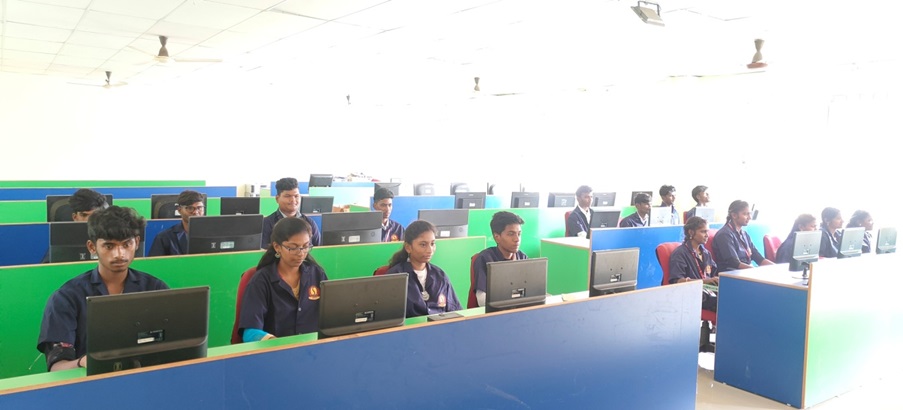
ARTIFICIAL INTELLIGENCE AND MACHINE LEARNING LABORATORY
The lab focuses on the recent advances in sub-areas of Artificial Intelligence and Machine Learning (AI and ML). The major thrust areas of current research include Image and Video Content Analysis, Computer Vision, Neural Architecture Search, Medical Image Computing, and Probabilistic Machine Learning. Integrating and reasoning with information from disparate data sources by training students, developers, data scientists, and researchers. Designing and implementing distributed systems for information exploitation, collaboration and decision making. IT has the ability to transform present diagnostic, disease preventive and control techniques, dramatically improving patient safety and treatment quality. To enhance workflow and personnel utilisation, labs now employ software to automate sample, operation, and outcome management.
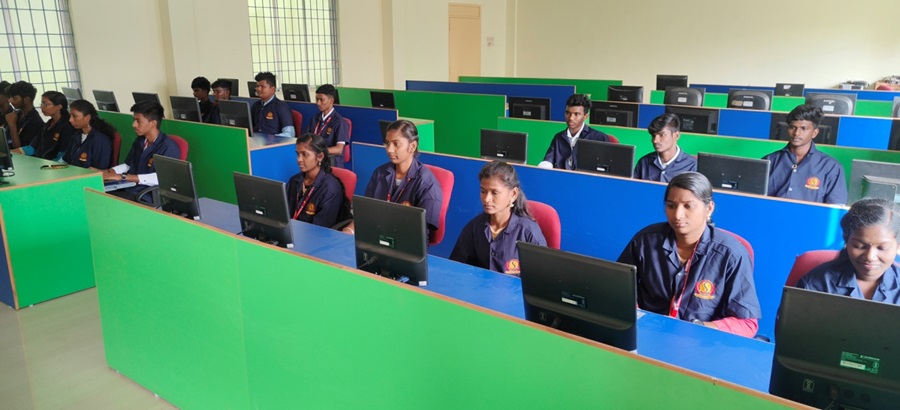
ALGORITHMS LABORATORY
An algorithm is a set of commands that must be followed for a computer to perform calculations or other problem-solving operations.According to its formal definition, an algorithm is a finite set of instructions carried out in a specific order to perform a particular task. Algorithmics is the systematic study of the design and analysis of algorithms. It is fundamental and one of the oldest fields of computer science. It to provide practical learning on various data structures and to understand the processing of different algorithm for problem-solving. This lab complements the data structures and computer algorithms courses.
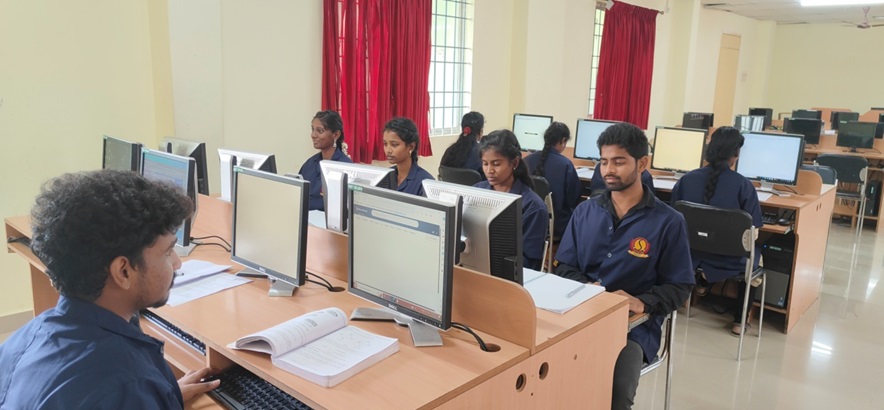
OPERATING SYSTEM LABORATORY
This lab is used to study and implement the concepts of operating systems in detail. Along with the issues in operating systems such as resource management, Process scheduling and management, operating system design issues . To provide an understanding of the design aspects of operating system concepts through simulation. Introduce basic Unix commands, system call interface for process management, interprocess communication and I/O in Unix.

DATABASE MANAGEMENT SYSTEM LABORATORY
A DBMS allows different user application programs to concurrently access the same database. DBMSs may use a variety of database models, such as the relational model or object model, to conveniently describe and support applications. This lab is dedicated for students to work on practical experiments, projects and research work, related to courses such as Database Management Systems, Distributed Data Computing, Hadoop, Data Warehousing and Mining, and Big Data Analysis. DBMS lab aims at practicing and achieving this aim by using various software’s such as SQL, ORACLE, and MS – Access etc. All these require a thorough practice of various DDl, DCL and DML queries.
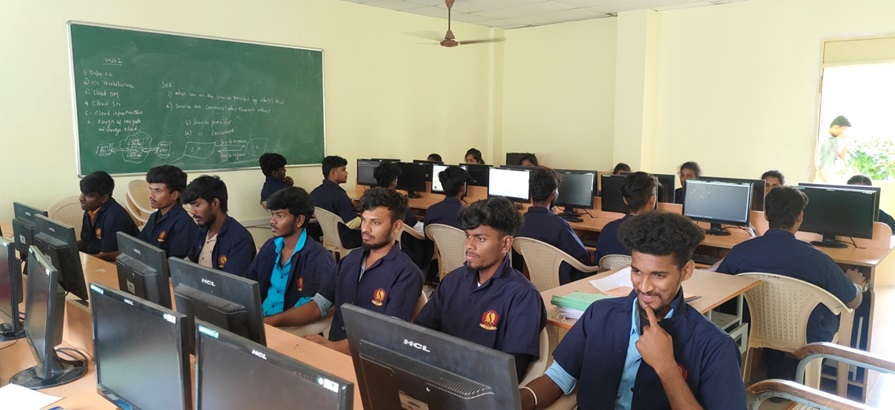
COMPUTER NETWORKS LABORATORY
The Computer Networks Laboratory (CNL) is the Institute’s center of research in computer networking and embedded computing applications. The lab is engaged in a wide range of projects, both practical and theoretical. The objective of this lab course is to get practical knowledge of working principles of various communication protocols. Analyse structure and formats of TCP/IP layer protocols using network tools such as Wireshark and network simulators. File sharing – you can easily share data between different users, or access it remotely if you keep it on other connected devices. Resource sharing – using network-connected peripheral devices like printers, scanners and copiers, or sharing software between multiple users, saves money.
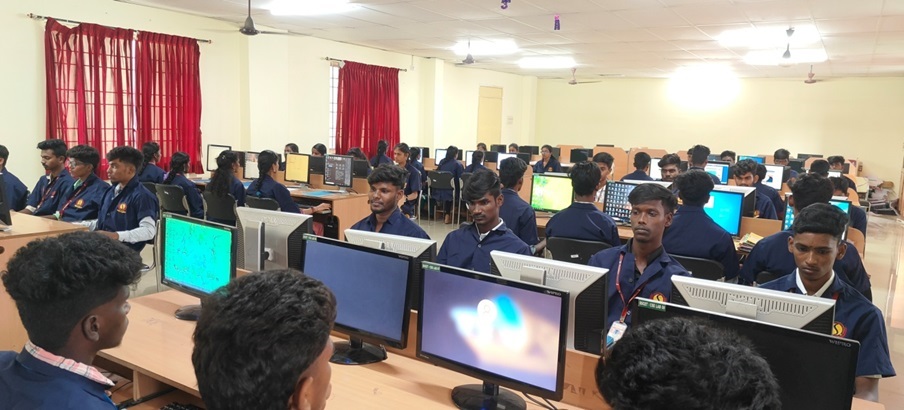
COMPILER DESIGN LABORATORY
Compiler design lab provides deep understanding of how programming language Syntax, Semantics are used in translation into machine equivalents apart from the knowledge of various compiler generation tools like LEX,YACC etc. designing complete translator for mini language. A compiler is a software that converts the source code to the object code. In other words, we can say that it converts the high-level language to machine/binary language. Moreover, it is necessary to perform this step to make the program executable. This is because the computer understands only binary language.
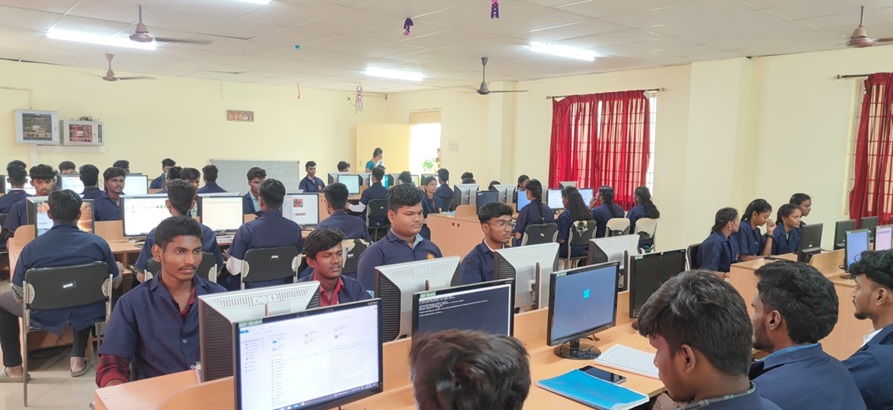
Software Specification
- Finger print image software
- Tally 9
- Rational Suit
- Dot Net
- Mobile tool Kit
- Java
- J2EE
- Windows Vista Business
- Windows XP
- Windows server
- Oracle Database 11GB
- Autocad
- Auto library Software
OBJECT ORIENTED SOFTWARE ENGINEERING LABORATORY
In this lab you will practice the software development life cycle (Project Management, Requirements Engineering, System Modeling, Software Design, Prototyping and Testing) using CASE tools within a team work environment. Object-oriented programming is based on the following principles: Encapsulation. This principle states that all important information is contained inside an object and only select information is exposed. The implementation and state of each object are privately held inside a defined class. the tool used in a lab is rational rose . this tool is used for a object oriented design of a problem . We draw a uml diagram in a rational rose which deals with the objects and classes in a system . The Unified Modeling Language or UML is is a mostly graphical modelling language that is used to express designs.
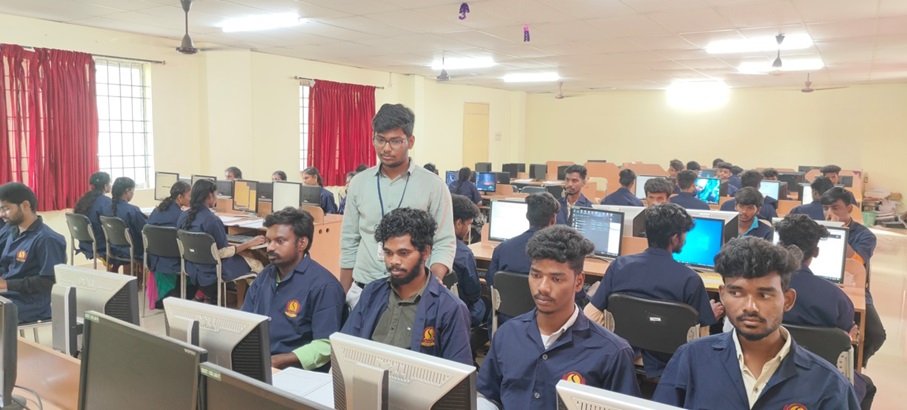
EMBEDDED SYSTEMS AND IoT LABORATORY
IoT embedded systems are the combination of physical objects and embedded systems technology that enable them to connect and communicate with each other and the internet. These systems consist of sensors, microcontrollers, and communication protocols that facilitate data collection, processing, and transmission. The Embedded Systems lab supports teaching and research in embedded systems and re-configurable hardware technology. We are engaged in research on architecture, design, and tools for networked and embedded computing and communication systems.


